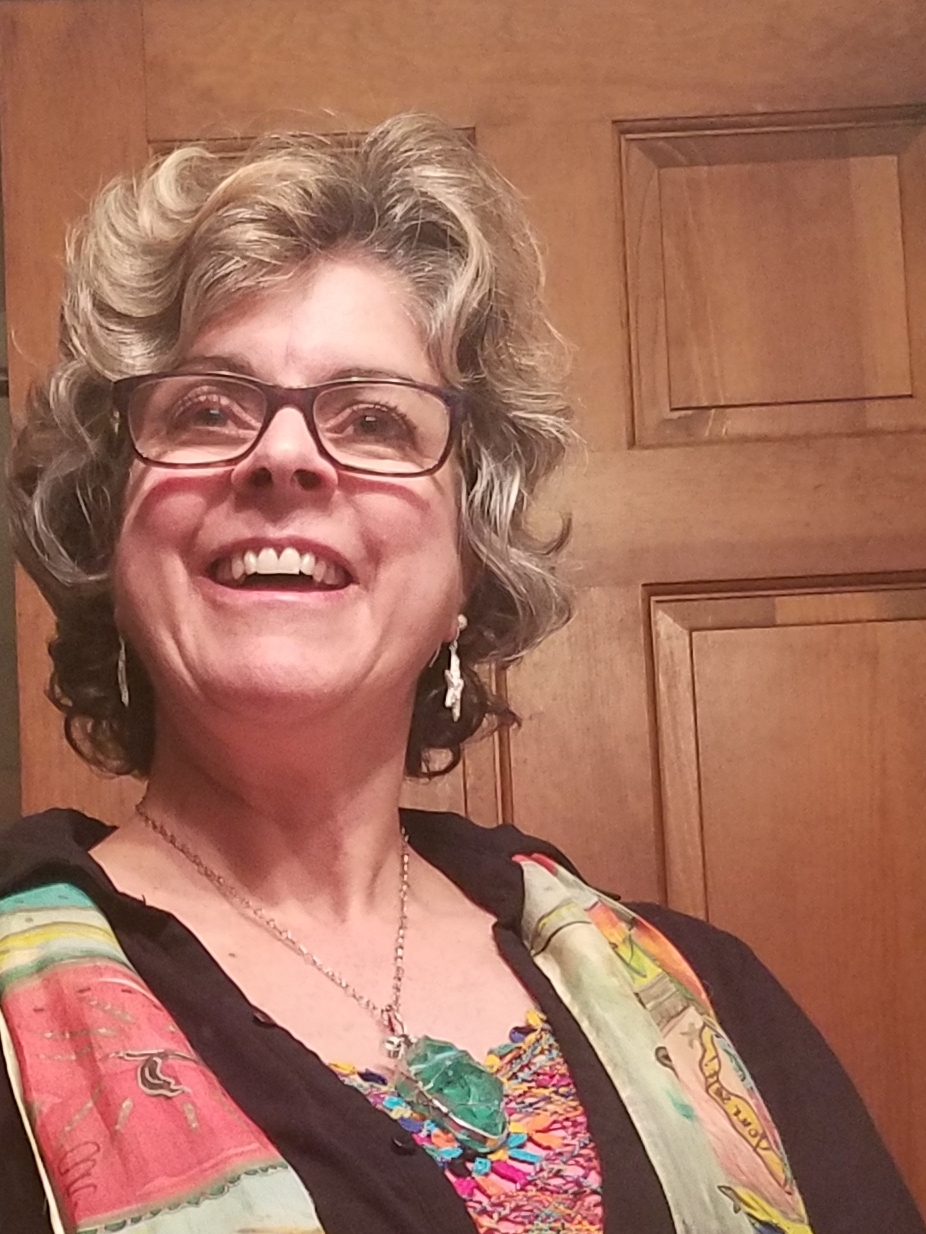"So, you're my mother? Think you can do it?"
There it is, the minute you laid eyes on your bundle of joy and the world stopped for one brief moment, a single breath and your heart skipped a beat. You made a silent promise to love and protect this child with every ounce of your being. For a nanosecond you were one.
The beauty of loving a child finds challenges in the day to day care and concerns, which are all too often overbearing and sometimes confusing. Yet, despite it all, the promise rides along just beneath the surface upon which your little wonder treads. As if your inhale yields her exhale or his cry. You are two halves in synergy. Like a professional detective you watch every milestone, questioning each step of the way, always hoping to keep The Bad Mother/Father Self-Doubting Monster at bay.
For parents of children with special needs this Monster rarely settles down, it is as if he lives right on the surface of their skin, causing an ache in anticipation of the challenges each day might bring. So, for the purposes of this article I have decided to shorten his name to The BS Monster because once we replace these self-limiting/doubting beliefs with a larger question of the purpose of why these kids are here, you will see how easy it will be to fire The BS Monster. You will see how easily this monster fades when you find what I call, the core truth of your beautiful child. So let's get started.
Someone once said there are no wrong questions, only wrong questions. So our first step to finding your child’s core truth is to formulate two questions:
- Why is this child here?
- What are we supposed to be learning from him/her?
Yes. Each child is different. Each being comes into this world for a different purpose. So it is here at the core of his/her life’s purpose that I wish to begin.
As a Special Education Teacher I learned early on that if I made an attempt to frame these two questions to myself, inevitably I saw the child’s strengths well before I saw any “dis” abilities. This is what led me to coin the phrase “differently-bled” instead of “disabled.” I prefer to think about and build upon a child’s strengths, rather than to start by anticipating what the child cannot do. Think about it. How long would your friendships last if you started talking only about all the things that your friend cannot do – every time you spoke to them or met with them? The same is true for our children.
So, how do we find the core truth of our child?
In short – become a good detective – and write down notes as you go, if you think you may forget things s/he naturally gravitated toward.
Step 1: Listen fully – with your ears, your brain and most importantly with your heart – your intuition, your feelings. Open your heart and mind and seriously be willing to learn.
Step 2: Observe your child carefully, watch for the things s/he gravitates toward naturally. Notice and support these interests. These become strengths. Interact with your child when s/he engages in these areas, even if the dishes need washing or the phone rings. Ignore it. STOP all electronics and sit down and play with your child. Interact and talk to your child. There is nothing more important than reinforcing strengths and interests as they emerge.
Step 3: Expose your child to a variety of music and have basic rhythm instruments available for play and exploration, easily accessible. Let him/her bang, whistle, ring bells, play a small piano and be sure to dance with your child and move to the music. The more interest you show in music, the better for your child. Rhythm is the precursor to mathematics and language (read Math & English).
Step 4: Expose your child to a variety of art materials. Every child explores their world through their senses. Make sure there is an Art Station set up for the child to choose modeling clay, crayons, markers and (with supervision) paint and a smock/easel)
Step 5: Participate in Social/Community Exploration – This is where children museums, concerts, play groups, going to the park, family outings come in. It even includes going to restaurants, theatre etc.
As you watch your child, notice patterns of behavior, when s/he laughs, goes back to again and again. These are cues to you to help you begin to know who this little being is and what his/her natural gifts might be.
Step 6: What are the feelings s/he engenders in others? Notice all “Triggers.” Which behaviors does your child do that really gets you (or others) upset or off balance in some way? Make a list of these. They are very important in answering why this child is here. Let me explain: If your child is engaging in negative behaviors s/he is asking us to develop patience, creativity in our responses, a higher level of kindness.
You may recall that when asked what he thought of Western Civilization, Gandhi responded with, “I think it is a very good idea.” So perhaps there is a thread of truth in the fact that special needs kids are here to help us recall our own humanity and to develop it more.
I found this particularly interesting to ask myself the question in Step #5 when I observed special needs children in public settings where folks may have not realized the child was challenged. It appears when we take our kids out in public, there is an unspoken expectation that they behave with a certain standard of polite behavior.
Unfortunately our kids did not read this etiquette and may even have difficulty listening to us when we instruct, so repeated trials are needed for them to “get it.” However, sometimes this can lead to awkward moments in public and it leaves parents subject to The BS Monster’s judgment of their parenting.
If you have followed the 6 steps above, you know your child well enough to know their heart/intentions despite their behavior. It is not as important that the strangers witnessing your child’s behavior know what your child can and cannot do, what matters is that you know. What matters is that your child knows you are there to help him/her navigate the world. So, STOP and breathe. Allow yourself a minute right in the moment when your child is acting up to process what is happening as it is happening. In schools we call these ‘teachable moments.” Try this the next time something like this happens:
- Bend down and ask your child if they need Mommy (Daddy) to help? (If you have taken my Mindfulness Plus! Program, ask – “Is Monkey acting up again?”)
- Ask them to explain what is happening. (If you know they can do this – otherwise skip this step,) If you have taken my program, ask, “Can Owl help?”
- If you know this is going to escalate badly. Tell your child you are both going out ‘for some air” and remove your child.
- Go sit on a curb or under a tree with your child, hold them if they are crying, hum a little song if your child does not have the capacity to talk about what is happening.
- Ask your child if they are ready to try again.
Here’s the really interesting part – from a spiritual perspective I have come to believe our differently-abled kids are only partially incarnated. It is as if these children were not 100% committed to being here in the first place and they have great difficulty in their bodies – some with delayed coordination, in their minds – their actions appear to be unthinkable or stubborn or weak and also with their spirit – some are remarkably loving and uncensored while others are nearly depressed and filled with anxiety. Whether you are willing to explore the spirituality of incarnating into a body or not, either way it can be said many of these kids suffer delays or what the medical establishment would call deficits.
However, if you discover the core truth of your child, you will begin to shift how you process these commonly held beliefs in a very different way. Please allow me the opportunity to give you an example:
Betty was a 5th grader who was born with an intellectual limitation, making her academic abilities lag nearly 4 years behind her peers. She participated in academic subjects when projects were assigned, allowing her to join her peers when small groups worked together on projects. Her peers accepted her wholeheartedly, allowing Betty to shine in an area where she could participate. The fifth graders worked many times in small groups with Betty and their acceptance of her and love for her made the kids accept having her as a member of their small groups. Teachers knew they had to adapt grading so the group grade was not affected by Betty’s presence. The result – the community of learners were richer for the experience of learning how to respectfully assimilate Betty into their group. They watched out for her and made sure she was having fun too.
Betty’s family knew their daughter’s core truth, so let’s look at what they discovered:
Betty’s List of Strengths:
- Betty loved being with classmates, socializing, singing, participating in class, drawing, watching movies with her peers, showing off what she was learning to peers.
- Betty liked to be allowed to walk back and forth from her classes alone.
- Betty loved to cook and clean
- Betty enjoyed projects, assignments, activities best when she was with a peer.
The family discussed the core truth of their child with me and told me that:
- Betty is a very loving person who cares deeply about other people. She knows which siblings are missing and which classmates are absent.
- Betty loves her cats at home, has an uncanny ability to know what the cat needs almost before the cat does. Her love of animals extends to dogs, gerbils and even her brother’s mouse.
- Betty appears to understand love, relationships, caring behavior, friendship. She gets very upset when she “senses” some else’s feelings are hurt and she will go to that child, them whether or not she knows them to console them.
Here is what we did with this knowledge to adjust Betty’s learning –
- We scheduled Betty into a Family & Consumer Science class where she would work in small groups to co while listening.
- ok basic food items.
- We scheduled Betty into Chorus where she was a full participant. While listening during practices Betty would draw on a piece of paper to pass the time, but she learned the songs.
- Mom & Dad learned to remove Betty if she had a melt down in a public setting by using the Mindfulness Plus! Breathe 1-2-3! Strategy.
- The BS Monster nearly died that year because the family now shared in many of Betty’s favorite activities. She knew all she had to do was ask and if busy, the family member scheduled a time to do the game/activity with her later. Family members knew keeping these dates were essential.
- Building upon Betty’s love of animals, we realized she may also be good at gardening and that opened an entire world up to her.
To summarize, when a child, regardless of ability, knows they are held and their needs will be met, they are less likely to act out. When families find the core truth of who their children are as individuals, family programs can be put into place to honor the essence of what is meaningful for that child so their inappropriate behaviors occur less and less frequently.
The essence of who these beautiful children are and why they are here appears to lie in what they engender in each of us. When we meet a differently-abled child, we are being called upon to respond rather than to react to this child. We are being asked to open our minds and hearts to these kids, to not judge them or their parents. Judgment teaches nothing and is painful to every party. Instead, think of each encounter with a child as an opportunity to learn, both for you and for the child.
The most remarkable lessons each of us learns is often not those lessons that we plan. Typically, if we are surprised by an interaction, we value it more. So, stay open to teachable moments, suspend judgment, open your heart and perhaps the next time you see a mother or father struggling to manage their differently-abled child, you might say or do just the right thing to STOP the moment long enough for everyone to find their humanity and embrace a child’s learning opportunity.
If it is true that on some level each of us is connected to the other, these children are here to help each of us find that nonjudmental place of compassion. We are being asked to raise our humanity to a levl of deep connection and caring. So, next time you see a Mom or a Dad struggling with a differently-abled child, why not say something like, "It's okay. There are better days ahead!" Pat her/him on the back and tell them you have been there too. I think you will be surprised by how grateful that Mom/Dad will be.




